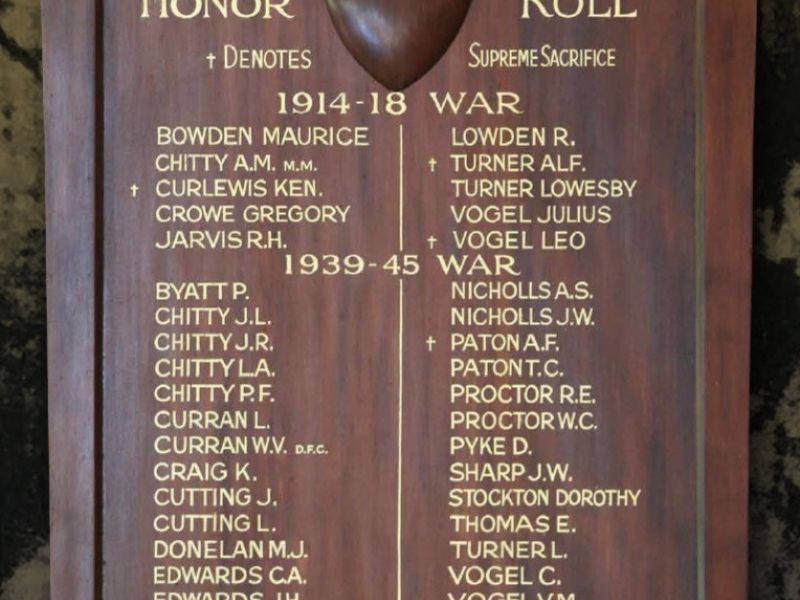Alfred James Turner
Alfred was born in Bethanga, Victoria, in 1892. He was the sixth child of John William and Frances Margaret (née Osmond) Turner. He would be part of a large family, having three sisters and six brothers, although one brother, Joseph, born in 1895 would die at a very young age.
Alfred enlisted on the 26th of July 1915 at Liverpool in NSW. At the time of his enlistment he was a single, 21 year-old labourer. He was allocated the Regimental Number 2942 and became part of the 9th Reinforcements for the 2nd Battalion, which was currently serving on the Gallipoli Peninsula.
The 9th Reinforcements embarked on HMAT A8 Argyllshire at Sydney, NSW, on the 30th of September 1915, disembarking at the Egyptian port of Alexandria about six weeks later. On the 27th of November 1915, he was admitted to the 4th Auxiliary Hospital at Abbassia suffering from the mumps. He rejoined his battalion on the 12th of January the following year.
It was at this time that the 1st AIF underwent a major reorganisation and expansion. The 1st Division and the 4th Infantry Brigade were split in two and their infantry battalions divided. The resulting halves were brought up to strength with recently arrived reinforcements. So, as a result of this, Private Alfred Turner became part of the 54th Battalion, 14th Infantry Brigade of the 5th Australian Division on the 16th of February 1916.
After more training in the sands around Tel-el-Kebir, the 54th Battalion embarked on HT Caledonian at Alexandria, Egypt, on the 19th of June 1916. It took ten days for the troopship to traverse the Mediterranean and arrive at the Port of Marseilles in the south of France.
Alfred was amazed to see the difference in countryside between the region of Tel-el-Kebir and the farmlands of France as he travelled by train towards the battlefields of northern France and Belgium. Sapper Roy Denning of No. 1 Field Company Engineers stated in his memoirs: “The countryside was beautiful. The many fast-flowing rivers and little streams were positively fascinating. We had delightful surroundings of beautiful scenery and green foliage, so radiant with life and fresh growth. What a contrast after the dirty, dusty, sandy sun-scorched Egypt.”
The 54th Battalion and the remainder of the 5th Australian Division (between 10000 to 20000 troops) arrived in France in time to participate in Australian troops' first battle on the Western Front at a village called Fromelles. In an engagement mirroring those of Lone Pine and the Nek in Gallipoli, the attack was intended as a feint to withdraw German troops away from the British offensive on the Somme. On the 19th of July the battalion moved from Bac-St-Maur at 1400 hours to the front line trenches. Allied artillery had been shelling the German lines for the previous 7 hours. This had robbed the attacking troops any chance of having the element of surprise against a well fortified village. As a result when the 54th and the other battalions of the division attacked they suffered heavily at the hands of the German machine-gunners.
The 54th attacked the enemy trenches at 1850 hours and occupied the German front-line trenches about ten minutes later. Having no flanking support and being subjected to fierce counter-attacks, the Australian line, including the 54th, withdrew back to their starting points. By 0800 the following day, the battle was over. The 54th Battalion casualties included 3 officers and 70 OR (other ranks) killed, 11 officers and 277 OR wounded, 4 officers and 169 OR missing. Among the dead were twenty-four sets of brothers and one father and son. The 5th Australian Division suffered 5533 casualties. It was Australia’s worst military disaster with more diggers killed in that one night than in the Boer, Korean and Vietnam wars combined. The division was incapable of any offensive action for many months afterward.
One of those killed was Private Alfred James Turner. He was buried in Anzac Cemetery just north of the village of Sailly-sur-la-Lys, between Armentieres and Bethune, France.
Alfred is remembered on the Australian War Memorial Roll of Honour, and the Tintaldra School Honour Roll. For his service during the First World War, he was awarded the 1914-1915 Star, the British War Medal and the Victory Medal.

 Stephen Learmonth
Stephen Learmonth